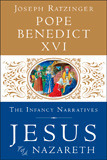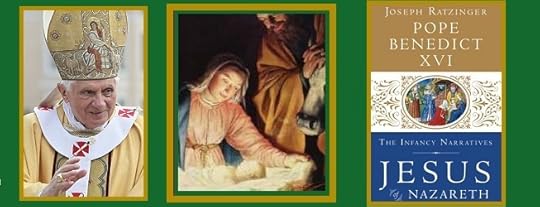Jesus’ Infancy through the Eyes of Benedict XVI
Jesus’ Infancy through the Eyes of Benedict XVI | Dr. Matthew J. Ramage, Ph.D. | HPR
As Benedict’s entire Jesus of Nazareth trilogy masterfully illustrates, the answer lies in carefully balanced exegesis that takes the historicity of the Gospels seriously, while also attending to the particularities of their unique literary form.
It is time to stop and pay close attention when the theologian you are reading starts talking about his “method.” In the final volume of his Jesus of Nazareth series of books, released a year ago this Advent, Benedict XVI painted a beautiful portrait of Jesus’ early life, but he began it with a discourse concerning method. As we prepare for the season of Advent, it is worth following Benedict’s advice to step back for a moment before we delve into our meditation upon the events surrounding Jesus’ birth: “Before we consider the content of the texts,” the emeritus pontiff says, “a brief word about their particular literary character is necessary.”
As we prepare for the season of Advent, it is worth following Benedict’s advice to step back for a moment before we delve into our meditation upon the events surrounding Jesus’ birth: “Before we consider the content of the texts,” the emeritus pontiff says, “a brief word about their particular literary character is necessary.”
That the Gospels have a “particular literary character” is something that many Catholics find hard to appreciate. People in the pews are generally aware that the Gospels are not transcripts of Christ’s life such as we would possess if video cameras had existed 2000 years ago. The faithful also have the sense that the Gospels are more than mere legends or myths. But how is the average person supposed to determine what historical claims are actually being made in the Gospels? And on what grounds are they to base their trust in the Gospels as histories of Jesus’ life?
In his characteristically sober, forthright manner, Benedict ties these questions together: “Finally, we must ask in all seriousness: when the evangelists Matthew and Luke tell us, in their different ways, and following different traditions, about Jesus’ conception from the Virgin Mary by the power of the Holy Spirit, is this a historical reality, a real historical event, or is it a pious legend?” We discover a clue to answering this challenge right at the outset of Benedict’s reflection on the Annunciation. He tells us that attempts have been made to see in the Gospel a sort of haggadic midrash. With this interpretative method, the ancient rabbis had sought to explain difficult portions of pre-existing biblical stories by crafting new narratives based on them. In doing so, a rabbi might condense a biblical text, expand it, fill in gaps, or clarify potentially misleading verses.
One of my favorite examples of this, outside the Bible itself, is found in the Book of Jubilees.
Carl E. Olson's Blog
- Carl E. Olson's profile
- 20 followers




